Before you even begin shopping for your bow, you should have some idea of what size and kind of arrows you’ll be using. Every archer has their own draw length, and some bows are betting for particular draw lengths than others. So, you want to make sure you purchase a bow that will accommodate your particular draw length and choose arrows that are appropriate for that draw length.
Different types of arrows are also better for hunting or target practice than others, so have an idea of what you plan on doing with your bow. This article will help you, once you’ve decided what you want to do with the bow, pick out the best arrows for your particular needs.
Calculate Your Draw Length
The first thing you need to know to pick out your arrows is your draw length. “But wait a minute, Jeff, don’t I need to have my bow first?” you might be asking. The short answer is no. The long answer is that there are two methods you can use to figure out your draw length, even without a bow in hand.
The first method is the arm-span method. Stand straight up, and stretch your arms out to either side. Make sure both of your arms are parallel to the floor and your shoulders aren’t pulled together. Then, have a friend measure the distance between both of your middle fingertips with a measuring tape. Take that distance, divide it by 2.5, and voila! You’ve got your draw length. For example, if your arm span is 70”, then the most accurate draw length for you is 28”.
The second method is the wall measurement. To measure your draw length this way, just face a wall sideways and place the fist of your bow arm firmly against the wall while keeping your arm parallel to the floor. Then, turn your head so you’re facing the wall. Imagine you’re holding a bow, because this position should look as if you were holding an imaginary bow and aiming at the wall. Once you’re in position, have a friend measure the distance between the wall and the corner of your mouth. This will be your draw length.
To get the most accurate measurement, use both of these methods. In the unlikely event that the numbers don’t match, add the two together and then divide the result by 2 to get your draw length.
How Long Should My Arrows Be?
Now that you know your draw length, add 1 or 2 inches to get the best arrow length for you. Most people have a draw length of around 28”, so arrows between 29 and 30 inches long are best for them.
How Heavy Should My Arrows Be?
We won’t go into measurements and specifics here, because the question is really whether you should use lighter arrows or heavier arrows. To determine this, you need to know what you plan on doing with the arrows. For hunting purposes, your arrow needs to drive its way through fur, skin, flesh, and sometimes bone to make a kill shot. Whether your shot can do this depends on the kinetic energy as well as the type of arrowhead you use. The heavier an arrow is, the more kinetic energy it will have when it strikes the target.
On the other hand, target arrows only need to go through a few layers of cardboard or or compressed foam, which doesn’t require nearly as much kinetic energy as the hide and bone of a whitetail deer. For target practice, stick with lighter arrows.
Some specific recommendations
Okay, with that information out of the way, what type of arrows should you buy if you want to do both target and hunting shooting? Since you’re a beginner, this is easy. Your accuracy isn’t going to be all that hot past 25-35 yards, so any target arrow you shoot should still have enough killing force to take down a deer from that distance. Go ahead and buy a set of good carbon target arrows to start with, and build your way up to the more weighty arrows as your skill level increases.
Easton and Carbon Express both make excellent arrows for target shooting. I’m particularly fond of the Easton Carbon Raider, which is available in both 340 and 400 weights; stick with the lower weight at first, then move up to 400 weight for hunting purposes when your accurate range increases. As you become even more skilled, consider moving up to the Easton Carbon ION arrows for even more stopping power.
Summary
This guide isn’t intended to be an exhaustive discussion on arrow selection. Instead, its purpose is to give the beginning archer an idea of what to look for in an arrow. To save you the frustration and confusion of all the information out there on spine, deflection, fletching, etc., I’ve tried to summarize what a person new to archery should worry about and look for in their arrows. As your skill level increases, you can fine-tune your arrow selection and go more in-depth with your research. For now, just find a set of arrows that will pierce your target and get out there!

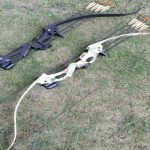
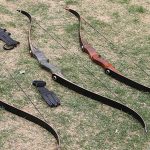
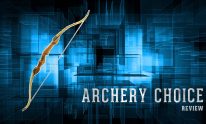
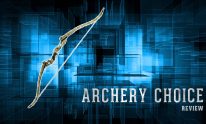
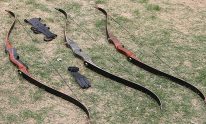
A correction to this article. For a given draw weight, heavier arrows will reduce the kinetic energy since KE increases as a function of the square of the velocity. More mass = slower arrow = less KE. Momentum is a more significant metric since mass and velocity are given equal weighting.
KE is really only applicable for the initial impact (think solid object), while momentum is more applicable for penetration (fluid body).
340 and 400 refer to the spine of arrows, not weight like this article states. 340 is a stiffer spine typically used with heavier poundage bows than the 400 is.